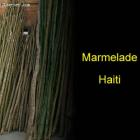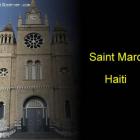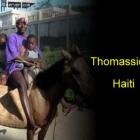ADVERTISEMENT
Cotton - Haiti Observer Blog
Cotton, Haiti Observer Blog. Read the following articles about Cotton
Cotton production to create 17,000 jobs in next 5 years in Haiti
In just a few years, it is expected that cotton could become Haiti's white gold providing millions of pounds of organic cotton for clothing, shoes, shirts and other clothing sold in the US and other countries.
the revival of cotton production in Haiti is a project supported by Brazil and the United Nations Food and Agriculture Organization (FAO) in a trilateral cooperation,
An attempt to promote the production of Cotton in Haiti was made in the 1950s by some Brazilian firms. The project was abandoned in the late 80s due to parasitic problems, especially the cotton weevil.
Camp-Perrin A Beautiful Destination To Visit In Haiti
Camp-Perrin, a municipality in the Les Cayes Arrondissement is located in Haiti's Sud Department. Around 40,650 people inhabit the place. It lies at 163 kms west of Port-au-Prince.
How Camp-Perrin Got Created
Three Perin brothers who were Frenchmen arrived here during the 18th century. They wanted to study the possibilities of growing coffee and cotton. They also wanted to explore the use of indigo and the dye of Campeche wood in Haiti. The city was thus created in 18th century.
Up the hill they built a camp, and Haut-Camp and Bas-Camp the two district towns came into existence. Perrin is subdivided into three counties namely, the second section - Champlois, the first section - Levy-Mersan and the third section - Tibi-Davezac.
Fort-Liberte In The Nord Department Of Haiti
Fort-Liberté is located in Haiti's Nord-Est-Department. In Haiti, it is the oldest country and Haiti got its independence here on November 29,1803. The Dominican Republic is located close to its border. Around 11,465 people inhabit the place. The language spoken in the region is Creole. Hurricanes, storms and sunshine are all experienced bringing changes in temperature.
How It Got Its Name
Indians inhabited the region originally after which the Spanish colonists came. In 1578 they found the city of Bayaja and in 1605 abandoned it. In 1732 the French reoccupied it as Fort-Dauphin. In 1764, Spanish forces captured it and in 1801 shortly, after independence was declared in 1803, it was restored to the French.
Anse-a-Veau in Nippes Department
Within the Department of Nippes, sits the Anse-à-Veau Arrondissement. Five hamlet-like villages comprise Anse-à-Veau: Arnaud, L'Asile, Petit-Trou-des-Nippes, and Plaisance-du-Sud.
Anse-à-Veau has a population estimated to be between 31,000-55,000. Founded in 1721 as a cityship, it lies below left of Ile Gonave and an inlet of the Caribbean Sea. Three sub-divisions make up Anse-à-Veau: Grande-Rivière-Joly, Sault-des-Baril-Moinsard, and Baconnois-Grand-Fond.
Following Haiti's magnitude 7.0 2010 earthquake, which reduced most of Haiti to rubble, thousands upon thousands of Port-au-Prince survivors overflowed Anse-à-Veau, severely straining its people and services.
Anse-à-Veau's main income-producing activities are agriculture and fishing. Farmlands produce coffee, sugarcane, lemons, and oranges, and use sustainability practices. Cotton-growing also takes place. The small-craft fishing industry plies its trade along Anse-à-Veau's coastline.
Our objective is to share with you news and information about Haiti and the people of Haiti. Traditions, habits and the way we were or grew are alive in this site. We highly recommend that you Subscribe to our Newsletter and also share with us some of the things that are memorable and made us unique people.

 Marmelade, Haiti
Marmelade, Haiti  Saint Marc, Haiti
Saint Marc, Haiti  Haitian Creole Translation
Haitian Creole Translation  Black Friday Shopping Season
Black Friday Shopping Season  Thomassique, Haiti
Thomassique, Haiti